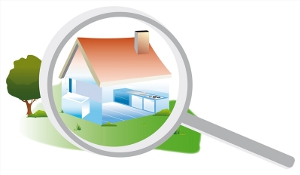 Most of us are aware of the bacteria on the surfaces we come in contact with. The doorknob for the bathroom, coins and paper currency in our pockets, handrails in subway cars, computer keyboards and mice at the library… the list of built environments on which microbes thrive is nearly endless. In our preoccupation with concern for what might be transferred from these surfaces to our hands, we often completely forget that the microbes living on our hands are also being transferred to everything we touch. And as dirty as some surfaces are, they pale in comparison to you and I. Numerically speaking, human beings are 90% bacteria! Even washing our hands and gargling with mouthwash does not erase their presence from our bodies, which is fortunate, because these bacteria are essential for our health and well-being by helping us digest food and keeping away more dangerous microbes.
Most of us are aware of the bacteria on the surfaces we come in contact with. The doorknob for the bathroom, coins and paper currency in our pockets, handrails in subway cars, computer keyboards and mice at the library… the list of built environments on which microbes thrive is nearly endless. In our preoccupation with concern for what might be transferred from these surfaces to our hands, we often completely forget that the microbes living on our hands are also being transferred to everything we touch. And as dirty as some surfaces are, they pale in comparison to you and I. Numerically speaking, human beings are 90% bacteria! Even washing our hands and gargling with mouthwash does not erase their presence from our bodies, which is fortunate, because these bacteria are essential for our health and well-being by helping us digest food and keeping away more dangerous microbes.
Each person’s collection of microorganisms is different. And in fact, the collection of bacteria on your right hand is different from the collection on your left hand, and the bacteria on your cheek are different from the ones on your chin. The compositions of these bacterial communities change very little day-to-day.
Now think about the light-switch in your bedroom. The one that only you touch, using the same hand, every day. Does it match the bacterial fingerprint for your hand? And if it does, did you put your bacterial community on the light switch… or, did the light switch’s bacterial community jump to your hand? And what about the other surfaces in your home that you interact with every day such as floors, doorknobs, and countertops?
I want to find the answers to these questions. To do so, my colleagues at Argonne National Laboratory and I are looking for volunteers who are about to move to a different house to join the Home Microbiome Study. They will be asked to collect samples every other day for six weeks to monitor how microbiomes of themselves and their house change in response to one another. This data will provide valuable information on how stable our microbiomes are, and whether our microbiomes colonize our house… or our house’s microbiome colonizes us!
This is a guest blog post from Daniel Smith, a postdoc in the Computing and Environmental Life Sciences center at Argonne National Laboratory. His job is to examine communities of bacteria and describe how people effect, or are effected by, variations in the microscopic species constantly interacting with us and the environment.
